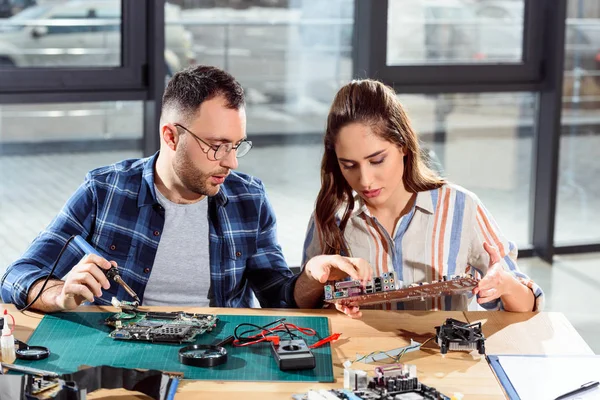Computer maintenance improves performance and lifespan by keeping hardware clean and up-to-date. It also reduces downtime and helps staff to work more efficiently.
Like an automobile, computers need regular tune-ups to run at their best. Having a preventive maintenance program is the best way to keep your IT equipment in top condition. Visit this site for expert guidance on selecting a reliable computer repair service. Ensure your tech is in capable hands!
1. Speed
From catching up on social media to running an entire company, computers handle incredible amounts of work and sensitive data every day. This means that a single hardware failure or software glitch could be disastrous. Luckily, computer maintenance programs can prevent these problems and help your hardware and software run at peak performance.
Processor cores and clock speed are key factors in determining a computer’s overall speed. Clock speed measures how many cycles the CPU completes per second, and is expressed in megahertz (MHz) or gigahertz (GHz).
Regular maintenance tasks include cleaning internal components to avoid dust buildup that can slow down the hardware and in extreme cases, lead to heat-related hardware failure. It also includes ensuring that external storage devices connect and discover properly as well as checking that the power supply and fans are working correctly.
2. Security
Performing maintenance regularly on computer hardware helps ensure that dust and debris is not accumulating and causing short circuits or overheating. It also helps prevent malware and other potential problems that could lead to data loss.
A metric called Scheduled Maintenance Critical Percent (SMCP) is a way to see how overdue a recurring maintenance activity is relative to its normal recurrence schedule. It’s a useful tool for identifying overdue tasks that are ripe for prioritization.
One of the purposes of a security schedule is to contractually increase the likelihood that Service Providers are actively implementing reasonable information security and privacy measures. This will help to prevent a data breach from ever occurring and make it easier for Customers to defend a lawsuit or regulatory enforcement action if a breach does occur.
3. Reliability
The reliability of a system is its ability to perform its intended function over time under stated conditions. It is not the same as quality, which focuses on minimising low-level defects that have escaped final quality control.
Software is different from hardware in that it can have unintended results from even relatively simple operations. In order to understand the reliability of software, a systematic approach is needed and is often based on formal testing procedures.
Reliability engineering involves identifying the relevant unreliability “hazards”, their consequences and their potential causes. This may include analysing the performance of existing equipment, failure modes and interactions, and assessing the associated risk to an acceptable level, for example using RCM. It may also involve determining mitigation actions such as requirements, design changes, detection logic, maintenance or training.
4. Efficiency
Computer maintenance refers to the operational and functional checks, servicing, repair or replacing devices, equipment or hardware systems. It is a cost-effective method of keeping systems ready to be utilised at the point of consumption.
The best way to perform preventive maintenance is to have a schedule of regular tasks. This will make sure that all the essential aspects of your computers are functioning properly, which in turn will improve their efficiency.
However, in the real world, it’s not as simple as that. Maintenance professionals are pulled in different directions, and sometimes urgent issues can jump the line ahead of scheduled work. That’s why a good maintenance tool should have an objective way to prioritize and rank overdue tasks – calculating their Scheduled Maintenance Critical Percentage (SMCP). SMCP is calculated by finding out how many days a task is late relative to its ideal recurring frequency, and then multiplying that number by 100.
5. Safety
A poorly maintained computer can be a safety risk. A glitchy operating system, overheated CPU or running out of memory are just a few problems that can be avoided with regular maintenance.
Hardware-level maintenance focuses on keeping physical components like fans and heat sinks clear of dust to prevent overheating or hardware failure. It also involves reviewing and uninstalling software that consumes excessive RAM to improve hardware performance.
A good maintenance schedule will include data backups and disaster recovery plans to protect data against hardware failure or accidental deletion. Backing up files to a external drive is an inexpensive way to keep important documents, photographs and personal information safe. It’s worth the investment to protect your valuable information and ensure that your computers are working safely.
